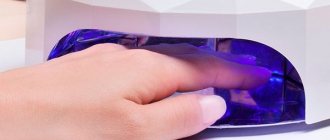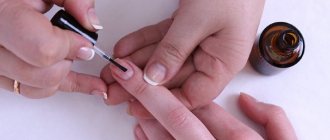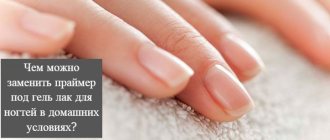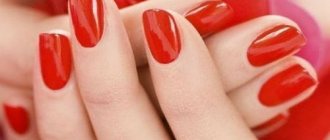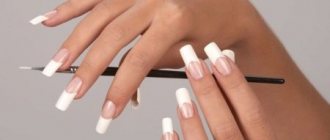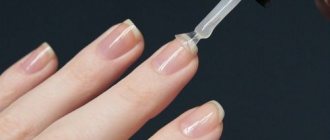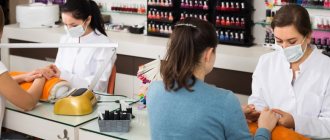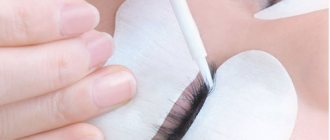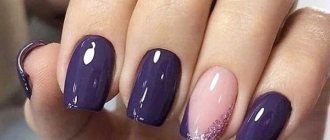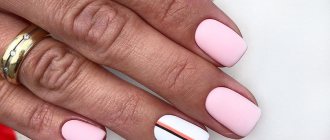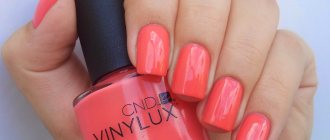Hello, dear readers! Do your nail polish often peel off? Do bubbles form on the surface when the varnish dries? Have you been dreaming of a beautiful and long-lasting manicure for so long? Don't worry, there is a way out! A nail dehydrator will help solve the problem. What it is, what it is used for and how to choose it correctly, you will learn from today’s article.
What is a dehydrator?
In order to create not only a beautiful, but also resistant to external influences manicure, you need to have a lot of necessary materials and tools. Any nail artist will have primers, bases, tops and other products that will make your nails beautiful and durable.
One of the most commonly used bottles on a manicurist's shelf is a dehydrator—a clear, colorless, slightly viscous liquid. Like most other manicure materials, it is applied to the nail with a brush and then dried. Dehydrators are usually used for preliminary preparation of the nail surface for the application of varnish or gel polish, acrylic coatings, and also before the extension procedure.
Reviews
Larisa, 30 years old
Lately I've only been using the IQ BEAUTY dehydrator. An ideal composition that really provides nail care. When applying desiccant, it is important to carefully coat the entire plate. If there are untouched areas left, chips will soon form in these places. The product should be used with caution; if it comes into contact with the skin, a strong burning sensation occurs. I remove marks with a cotton swab dipped in clean water.
Yulia, 27 years old
I learned how to do manicures with gel polish myself. The first times were unsuccessful; for a long time I could not figure out the reason for the peeling of the decorative coating 3-4 days after its application. I read that a dehydrator can be replaced with a primer. Only later did I find out that not every primer contains dehydrating substances. After following the technique using all the means, it was possible to obtain durable nail art.
By following the bonder application technology, high-quality preparation of nails for decorating with coatings is achieved. The process includes disinfection of the manicure area, prevention of fungus, removal of dirt and moisture. Taken together, all of these factors help improve the adhesive properties of the plate surface.
Compound
The most important component in the dehydrator is an organic solvent - butyl acetate (ester of acetic acid). It is he who carefully removes excess from the surface of the nails without disturbing their internal structure.
In addition to it, the degreaser may contain the following substances:
- Dyes and flavors. In fact, they do not have any beneficial functions, but are found in many dehydrators. It is better to buy a degreaser without these components or with their minimum content. Why? These are generally not the most useful (and in this case, also unnecessary) elements. In addition, allergic reactions may occur to them.
- Acids (most often methacrylic). They improve the penetration of the product into the nail structure and have bonding properties. They are contained in safe quantities, but upon contact with skin they can still cause a fairly strong burning sensation. Therefore, you should work with an acid dehydrator very carefully!
- Resins. Included in acid-free primers. Promotes a soft, gentle effect on nails. They penetrate shallowly, and after drying they leave a thin sticky film on the surface.
How is a dehydrator different from a nail plate degreaser?
The degreaser was originally created to remove hydro-lipid mantle and fat-containing contaminants from the surface of nails and skin. For example: sebum, creams, and even leftover food. The degreaser is based on isopropyl alcohol and is usually sold in large bottles. It is also used as a liquid to remove residual stickiness. They often write this on the packages: Nail Prep 2 in 1: Degreaser and nail remover.
Domix nail prep lux is a hypoallergenic degreaser.
- After moistening a lint-free cloth in degreaser, wipe the surface to be treated. For severe contamination or removing stickiness from the base and gel, use a separate napkin for each nail.
- Solvent-free products are suitable for cleaning professional brushes and wetting brushes when working with acrygel.
Dehydrator - on the contrary, is usually sold in small bottles with a brush, 10-15 ml, similar to gel polishes. Not used as a cleaner, applied with a brush to already prepared nails.
How to choose?

- When purchasing, first of all, pay attention to the composition - less unnecessary colors and flavors; acidic or acid-free.
- Do not be tempted by a suspiciously low price - as you know, a good product is never too cheap. On the other hand, high cost is also not always a guarantee of quality.
- The best option is to choose a product from a well-known brand, in a trusted store and at an average price.
Dehydrator and degreaser
Contrary to popular belief, they are not exactly the same thing. These products differ in both composition and purpose. The first penetrates deeper into the nail plate and dries it. And the second works more superficially, only removing dirt and excess fat from the nail.
Which is better to choose? Depends on skin type. If you have excessive sweating, it is better to use a dehydrator. And if the skin is normal or dry, a regular degreaser will be enough. Choose the tool that suits you best. You don’t need to use both at the same time—it won’t make your manicure any better.
Acid dehydrators
They contain methacrylic acid of varying concentrations (from 25%). Once applied, it evaporates quickly, leaving a light white residue. If it appears, then you can move on to the next stage.
After contact with acid, the nail surface will be able to reliably adhere to any foreign material. Therefore, it is very practical to use an acid primer when doing acrylic nail extensions.
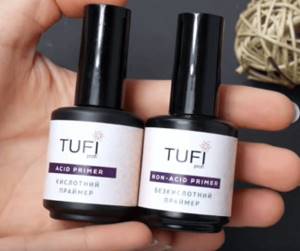
Acid-free dehydrators
They do not contain acid and do not provide such a strong bond with the surface of the nail as acidic ones. Resins are used here as an adhesive material, creating a sticky layer.
“Acid-free” remove the greasy film, dry and sterilize the nail. They are recommended to be used before applying gel polish, as well as after a wet trim manicure - the likelihood of inflammation and infection with fungal diseases is reduced.
Attention! If you are going to do extensions with tips, you should not use an acid-free dehydrator - this may cause damage to the extensions. If you are correcting gel nails, apply it only to the regrown ends (without touching the skin!).
How to apply dehydrator to nails
- Apply to nails prepared for coating: when the manicure has already been done, the dust has been removed, the nail is degreased and buffed. This product evaporates very quickly, so there is no point in trying to apply it in any layer. Simply brush a brush soaked in a dehydrator over the surface of the nail. The liquid will evaporate almost instantly and the nail will turn white. After this, you can apply bonder, then base, color and top.
- Do not use it on dry, brittle, curled or aged nails. Only if there is an extreme need, for example, you need to apply a coating after a classic “wet” manicure.
- Can be used for drying wet cuticle and pterygium in hardware manicure and pedicure. This will make it easier for the master to work, the cutters will clog more slowly, and the discomfort will be reduced.
Dehydrator or primer: what's the difference?
Like other nail degreasers, primer is a base substance that is applied to the nail plate before applying gel polish. It has a liquid consistency, dries quickly on the nails, and makes the manicure last for a long time.
Many girls want to know whether a dehydrator and a primer are the same thing or not.
These are almost identical substances, but there are still at least three significant differences between them:
- The primer makes the surface of the nails rougher, and in general it is not as gentle on your nails as a regular dehydrator or degreaser.
- The primer better protects you from the chemicals contained in artificial coatings and prevents them from penetrating living tissue.
- When using a primer, the manicure lasts longer than when treated with a conventional dehydrator.
Advantages and disadvantages
It is a misconception that a dehydrator and a degreaser are identical. Their compositions and functionality have many differences. To understand what the differences are, you need to compare the advantages and disadvantages of each type of bonder.
The degreaser removes grease and dirt from the surface, acting superficially. The desiccant also removes excess moisture, penetrating deep into the structure of the horny epithelium. It is not necessary to use both means. Those with oily skin and excessive sweating should give preference to a dehydrator. If there are no skin problems, use a regular degreaser.
When comparing a desiccant with a primer, the following advantages are observed:
- both products create a protective layer that neutralizes the negative impact of decorative coatings on the horny epithelium;
- They are used to treat natural nails.
In comparison of adhesive properties, the desiccant loses to the primer, which creates a stronger adhesion of the plate to the coating.
When applying a primer, the nail surface becomes rougher than after treatment with a dehydrator.
Advantages of the dehumidifier:
- high-quality preparation of the plate for coating, copes with all types of contaminants;
- does not change the color of shellac or gel polish;
- prevents the development of pathogenic microflora;
- does not deplete the tissue of the stratum corneum;
- provides an antibacterial effect;
- can be used on brittle and thin nails;
- does not destroy the structure of the plate;
- restores acid-base balance;
- does not have a toxic effect on the epithelium;
- increases surface adhesion.
Primer and bonder
The words “primer” and “bonder” are considered almost synonymous. But there are some differences between these means.
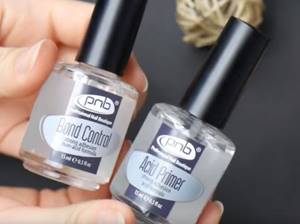
Bonder is used to enhance the bonding properties of acrylic, gel and other nail extension products. It also prevents the extensions from peeling off and maintains the acid-base (pH) balance of the nails. The bonder is applied after the primer and then dried under a lamp.
Read more about primer and bonder in one of the following articles
Budget options
Arnelle for nails Nailfresh
Degreaser-dehydrator is suitable for treatment before manicure or pedicure. Copes well with its main task.
Volume – 12 ml.
Price – 400 rub.
Arnelle for nails Nailfresh
Advantages:
- thoroughly degreases the nail plate;
- allows the coating to adhere perfectly to the surface;
- washes off the dispersion layer of the hardened top coating;
- affordable price.
Flaws:
- No.
IQ BEAUTY
Preparation for degreasing the nail plate. Suitable for use before applying base to remove moisture from the surface. Its use ensures high-quality adhesion to the base coating.
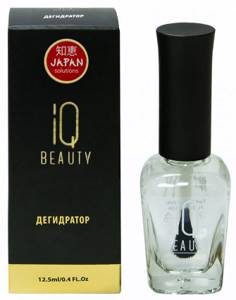
Volume – 12.5 ml.
Price - 215 rub.
IQ BEAUTY dehydrator
Advantages:
- affordable price;
- eliminates excess moisture from the surface;
- provides high-quality adhesion of the base coat to the nail plate.
- no sticky layer;
- no fragrances;
- refers to professional cosmetics;
- dries quickly;
- manicure lasts longer;
- convenient to apply.
Flaws:
- No.
Fantasy Nails
A professional degreasing product at an affordable price and with excellent properties.
Volume – 15 ml.
Price — 139 rub.
Fantasy Nails dehydrator
Advantages:
- affordable price;
- effectively degreases;
- dries quickly;
- Apply evenly and easily using a brush;
- eliminates excess moisture from the surface;
- provides high-quality adhesion of the base coat to the nail plate.
Flaws:
- No.
Patrisa nail
With its help, it is easy and quick to remove all moisture with a deep drying effect.
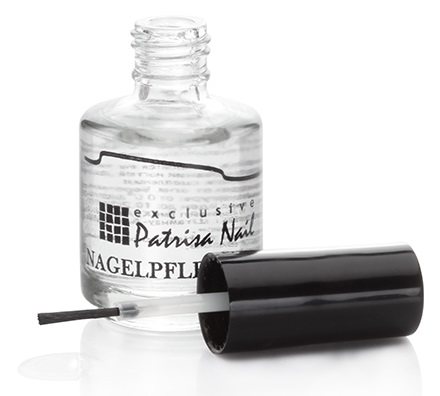
Volume - 16 ml.
Price – 270 rub.
Patrisa nail dehydrator
Advantages:
- enhances adhesion to primer and varnish;
- will preserve even the most complex pattern on your nails for a long time;
- remove dust and disinfect;
- deep drying and moisture removal;
- refers to professional cosmetics;
- dries quickly;
- manicure lasts longer;
- convenient to apply.
Flaws:
- No.
Replacing funds
Has this ever happened to you - you start doing a manicure, and the dehydrator suddenly runs out? And there is no new bottle either. Involuntarily, you have to look for something to replace the primer in such a situation. Of course, the “analogues” listed below will not replace this product, and using them on an ongoing basis is not at all recommended. So, even nail service specialists sometimes use the following instead of primers:
- boric alcohol 3%;
- acetone or nail polish remover based on it (if it contains oil, this will not work);
- medical alcohol;
- vinegar;
- cologne.
Using such substitutes, you greatly dehydrate the nail plate. And the result that is achieved with a real dehydrator cannot be expected here.
How to replace degreaser at home?
Experienced nail service professionals prefer only professional manicure products in their work, fearing experiments and unpredictable consequences, so as not to risk their reputation in front of an established client base. But not all lovers of spectacular nails at home can afford them.
You can degrease your nails before coating not only with special liquids. There are many other substances that can replace them.
Boric acid.
Pharmacy alternative to replace standard degreaser. Able to degrease and clean the nail of all contaminants, while simultaneously disinfecting it. But it is not recommended to use the solution often, since the composition contains alcohol, which gradually dries out the nail. Using boric acid is simple: just moisten a cotton sponge or a piece of cotton wool with the liquid, then wipe your nails and the area around it.
Lemon juice.
A popular and proven way to remove fat from nails is lemon juice. If this citrus is not available, then it can be replaced with citric acid, having previously dissolved it (half a teaspoon per 100 g of water). But lemon juice or solution does not effectively degrease the surface of the nail, but is necessary to remove dirt from it. After moistening a cotton wool or sponge in the liquid, wipe the nails thoroughly.
Alcohol.
What is needed is medical alcohol without impurities. Vodka in this case will not be an alternative. Typically, alcohol not only degreases the nail, but also thoroughly disinfects it, preventing the development of fungi and other pathogens. After moistening a cotton pad with alcohol, wipe the surface of the nail. The systematic use of alcohol for degreasing is not recommended, as it greatly depletes the nail.
Soap.
Using soap for degreasing on a regular basis is not a very good option. Although it can be used to remove fatty deposits and dirt from the nail, it still will not be a reliable means of guaranteeing a long-lasting manicure. Using soap is simple: lather your hands, rinse under running water. If necessary, repeat the procedure.
Nail polish remover.
If the liquid does not contain acetone, then such a product can only partially replace a degreasing product. It ineffectively removes impurities, leaving some of the fatty deposits on the nail surface. To use the product, you need to apply it to a sponge (cotton pad, a small piece of cotton wool) and wipe your nails with it, as when removing nail polish.
Making a durable coating
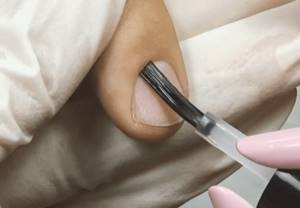
Nail experts say that it is not difficult to make a high-quality manicure using a dehydrator. But you need to work very carefully and be sure to follow the following sequence of operations:
- Apply antiseptic to your hands. (Professional workers should wear gloves.)
- Prepare your nails according to the standard procedure: adjust the length with scissors and shape with a nail file.
- Remove excess cuticle using a pusher or an orange stick.
- Remove the shine from the nail surface with a sanding file and do not forget to brush off the dust with a brush.
- Use the dehydrator in small portions, lightly squeezing the brush against the neck of the bottle.
- Carefully apply a thin layer of the product to the nail plate so as not to touch the skin.
- Start covering the nail from the central part. A good dehydrator will spread on its own.
- If primer gets on your skin, wash it off with water.
- Wait until completely dry. This usually takes no more than 1 minute.
That's all! Now you can move on to the next step.
Signs of allergies
Any product can cause an allergic reaction, so you should always look at the composition of the product and only then use it. Allergies to nail degreaser can manifest in different ways.
However, several factors often serve as signs:
- redness of the skin around the nail;
- itching of fingers;
- burning of the skin;
- tearfulness;
- constant sneezing;
- peeling of the skin;
- increase in body temperature.
Before applying a new product, it should be tested. To do this, drop a small amount of degreaser onto the nail and wait 10 to 30 minutes. At the first signs of an allergic reaction, you need to wash your hands well, ventilate the room and take allergy medicine.
TOP 5 popular brands
The modern market of cosmetic products offers a very wide range of dehydrators. Which of them are considered among the best and how much does a quality product cost? I looked through many ratings and will help you make your choice.
Gelish nail prep PH bond
Produced by the American company Hand & Nail Harmony, one of the world's leading manufacturers of gel polishes. The products belong to professional cosmetics. This bonder quickly removes moisture and degreases the surface of the nail plate. Does not leave marks and does not require drying in a UV lamp.
The product is available in a white 15 ml bottle. It has a short transparent brush, easy to use. It has a pungent odor, but does not contain acids. Advantages: durable and beautiful manicure without chipping or peeling. Among the disadvantages, consumers note the dryness of the cuticle (if the substance gets on it).
For a bottle you will have to pay 450 - 700 rubles. The price depends on the store (online, wholesale, retail, professional, etc.).
CND Nail Fresh
The American company CND (Creative Nail Design) is a world leader in the field of professional beauty of nails, hands and feet. This product disinfects, disinfects and degreases well the deepest layers of the nail plate.
It has a gentle composition, so it does not change the structure of the nail or increase fragility. Used as a hemostatic agent (quickly stops bleeding from cuts during a manicure).
Available in a 29 ml bottle. The product evaporates quickly, so the manufacturer warns that the lid should always be tightly closed. Has a convenient brush. Cost – from 950 to 1300 rubles. (Which is not that expensive considering the size of the bottle).
Professional Nail Boutique
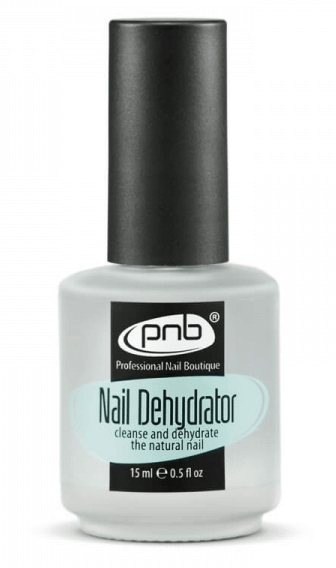
Manufacturer: American company PNB. It removes excess sebum and dirt from the nail plate well. Does not have a sticky layer. It comes in a transparent glass bottle with a convenient brush (thin and moderately hard).
Has a volume of 15 ml. The consistency is very liquid - almost like water. The smell is pungent, chemical. This is precisely what many consumers note as a drawback. It dries instantly, the nail becomes white and rough. The product is budget-friendly and ideal for home use. Cost – 200-450 rubles.
Lily Angel
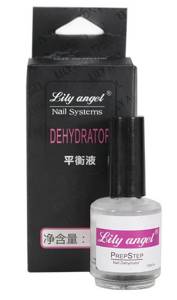
This Chinese product dries the top layers of the nail plate well. Often used for nail extensions. Strongly binds layers of material to the natural surface.
Available in a glass container with a volume of 15 ml. Packed in a cardboard box. The brush is moderately hard and easy to work with. There is a slight chemical smell. Dries quickly on the nail plate and leaves a white tint. Inexpensive product. Sold on Aliexpress. Price – from 170 rubles.
IBD Dehydrate
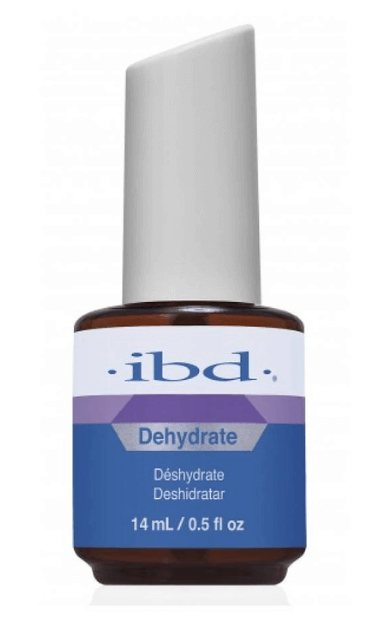
American manufacturer. The product is specially designed for use by top professionals. Well restores the PH balance of the nail. Ideally prepares the nail plate for coating or extensions. Does not contain flavorings or coloring agents.
It has a comfortable long brush that easily covers the nail. The consistency is liquid. When in contact with the skin it does not cause irritation or dryness. Available in a darkened 14 ml bottle. Price – 500-700 rubles.
Why do you need a degreaser?
A common product that is often used to perform a manicure is a degreaser. This composition is designed to remove oil and dirt from nails.
It's no secret that during human life, the sebaceous glands produce a certain amount of fat. This helps prevent the surface from drying out and protects the skin from negative environmental influences. However, synthetic materials have difficulty adhering to oily surfaces. After some time, this leads to peeling of the coating.
Expert opinion
Karnaukh Ekaterina Vladimirovna
Graduated from the National University of Shipbuilding, majoring in Enterprise Economics
To avoid such problems, surfaces are degreased before fixing the artificial material. Typically, cosmetic products contain liquids with acetone, which help get rid of oil on the nails.
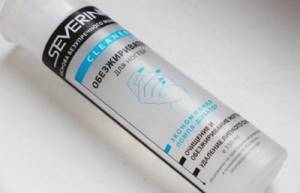
What to remember
Let's summarize:
- In the modern nail industry, there are many special products that protect our nails and allow us to keep our manicure in its original form longer - dehydrators, degreasers, primers, bonders.
- They perform many tasks: remove residual fat and dirt from nails, dry, disinfect, improve adhesion to gel polishes, and increase the durability of manicure. As a result of their use, your nails will have an aesthetic and well-groomed appearance for three or even four weeks.
- When used wisely, dehydrators cannot harm your body. And yet, in order to avoid unpleasant moments, it is better not to forget about basic precautions.
- Before you buy a nail dehydrator, you need to carefully study the composition. It is best to give preference to hypoallergenic products - without fragrances or dyes.
I suggest you watch a video on how to properly work with a dehydrator.
If you still have any questions, please feel free to ask them in the comments! See you in the next article!
Special preparations
This category includes a wide selection of manicure products and other useful accessories.
Products such as acetone, gel polish remover or foil for removing gel and polish are essential items that are useful for adding beauty to women’s hands.
Other drugs in this category are used for degreasing - on the one hand, it is a classic degreaser, and on the other, it is a degreaser that additionally gives a glossy shine.
A degreaser (also called a cleaner or an auxiliary) is used in different cases, one of them is to remove the thin sticky dispersion layer that remains on the nail after curing with a gel or hybrid lamp, and the other is just before a classic manicure.
Important! The advantage of such products is that the nail plate shines after using them, and the coating does not lose its shine.
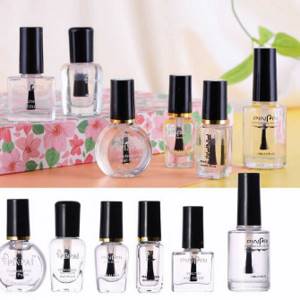
What do you need to work with gel polish?
The huge amount of tutorials available on the Internet is encouraging more and more women to try their hand at working with gel polish at home. Before you start making your shopping list, you need to decide what type of manicure is suitable. If the nail plate is thin and the length of the nails does not require extensions, then it is enough to simply strengthen them with gel and give them the desired shape.
However, if your nails don't look like they look on the covers of newspapers, you can successfully extend them, giving them a completely new look.
Preparation stage
No matter which method you choose, there will be a procedure that is critical to the longevity of the manicure - prepping the skin and prepping the plate. Professionals will use a special machine with correctly selected cutters for this purpose, which will save time and remove unsightly burrs. And girls who do manicures at home often use standard nail clippers. To facilitate the process of removing cuticles, an emollient liquid is applied. You can use a wooden stick to remove or push back the cuticle.
The next step is to prepare and matte the plate. A machine and thin cutters or a file and a polishing block will also come in handy here.
Finally, all that remains is to cut it to the desired shape and the first stage is over.
Application of primers
To prolong the durability of the coating, it is not enough just to matte it well; you also need to ensure a constant connection between the gel and the plate, which will certainly increase adhesion.
- What is a primer?
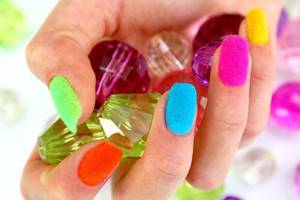
The nail surface is hydrophilic, and the gel mass is hydrophobic. In this case, the primer consists of both hydrophilic and hydrophobic particles, thanks to which it ideally connects the nail with the gel.
Acid or acid-free?
Primer, like Cleaner, affects the durability of hybrid, gel and acrylic manicures. The primer not only degreases and removes all contaminants, but also changes the pH of the plate.
Primers come in two main types:
- acid-free primer - recommended for nails that do not cause serious problems, that is, healthy and strong;
- Acid Primer - recommended for problematic nail plates, that is, those on which the styling becomes breathable and wears off quickly. An acid primer will significantly increase the adhesion and durability of your manicure.
Acid primer is an organic compound - an unsaturated carboxylic acid. It works by dissolving oil particles on the plate that cannot be removed by matting the plate with just a block.
Since the drug has high penetrating power, it should not be applied more than once in one application.
The acid primer is applied only to the natural nail plate after its preparation. After application, a characteristic white coating remains - this is a natural phenomenon that should not cause concern.
Acid-free primer is softer in composition than acid primer.
Its main ingredient is ethyl acetate, not methacrylic acid. With acid-free primers, the odor is much less noticeable than with acidic primers. The gentler formula is recommended for all nail plates that do not cause problems. An acid-free primer is more viscous and takes longer to dry after application, leaving a sticky layer that does not evaporate.
- Choosing the right gel polish

It's finally time for beauty. You need to prepare a lamp for curing the gel, it can be either a classic UV lamp or a faster LED lamp - both will cure the gel differently, but its curing time will be different. The UV lamp works slower, the LED (depending on the power) is faster. You will also need a 4 or 6 mm wide gel brush. At this stage you can move on to the gel.
A novice stylist most often chooses a gel with a thicker consistency - since it is easier to apply.
Color will also be key; here, first of all, be guided by your own taste. The gel should be applied with a brush to the center of the nail plate and spread along the nail shaft (remember not to pour into the cuticle) towards the free edge of the plate.
What will you need at this stage?
- UV or LED lamp;
- gel brush;
- gel;
- cotton swabs;
- cleaner;
- Preparation.
Gel polishes are different:
- durability;
- originality;
- a variety of colors;
- the ability to make different designs.
Nowadays, cosmetics companies are trying to outdo each other by introducing an ever-increasing range of hybrid polishes to the market. Buying high-quality and, above all, safe products is the key to a long-lasting and effective manicure.
Important! There are cases of allergies to such varnishes. Then you should immediately contact the person performing this type of manicure, or seek advice from a dermatologist or allergist.

What is a dehydrator used for?
The drug is used to degrease the nail plate before performing hybrid, gel and acrylic manicure. It also removes all dust and dirt. The durability of the result largely depends on it. Some cleaners are also used to remove the dispersion layer of the top coat and add shine to the finish coat.
In addition to its main functions, the liquid is able to restore pH levels, disinfect and prevent skin infections.
Nail technicians recommend always using a dehydrator, regardless of what type of coating will be used.
In addition, using a dehydrator strengthens the natural nail plate and prevents it from splitting.
The main component of the product is the organic solvent butyl acetate, which thoroughly removes excess moisture from the surface of the nail plate. Butyl acetate does not damage the nail structure, since it does not penetrate deep into the keratin layer. Dries completely immediately after application.
Important! Before purchasing, pay attention to the composition. Among the ingredients of the drug there should be few dyes and flavors.
Popular brands:
- NAOMI;
- CND Nail Fresh;
- PNB;
- IBD;
- MOLLON PRO Professional.
Important! Degreasing the nail plate plays a very important role in preparing for the application of the following products, ensuring their high-quality adhesion and avoiding, for example, bubbles from varnish.
What is more effective: a dehydrator or a degreaser?
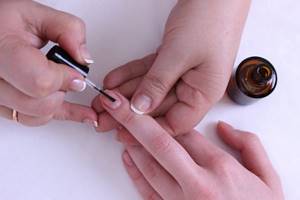
A dehydrator is a product designed primarily for wiping off the dispersion layer formed after applying gel polish.
The cleaner can also moisturize the cuticles and add shine to an already painted nail plate. This product may contain oils or lanolin for said added moisture.

The degreaser and cleaner clearly combine the area of application, that is, the application of gel polish.
Both of these products are responsible for preparing or finishing the nail plate. They support the correct application and operation of other products. They play some supporting function, but without them the result will not perform as well as it should for many weeks.
The cleaner is definitely a more versatile product, as the degreaser is only designed to degrease the nail plate before applying the base coat.
A cleaner can do more than a degreaser. By using the appropriate additives, it can not only clean the nail plate, but also moisturize the hands around the nails.
However, it is worth remembering that a cleaner containing, for example, oils, of course, will not prepare and degrease the nail plate properly at the very beginning of the procedure; a degreaser will be needed here.
Rules for using degreaser for gel polish and shellac

A degreaser for gel polish and shellac helps keep your manicure chip-free for a long time if you follow a few rules when using the liquid:
- Moisten only a lint-free cloth with it, not a cotton pad or swab. The latter leave lint, which will prevent the coating from becoming even and will contribute to its peeling. Even gauze or cloth will not work here. They should only be used in the absence of napkins, but then you should definitely examine your nails.
- Wipe surfaces thoroughly. And remove dust and grease not only from them, but also from the folds between the plates and the skin of the lateral and proximal ridges.
- Degrease the end of the free edge as well. Even if you don’t “seal” it with a base or gel polish, this area should be clean. Otherwise, peeling may begin from it.
- Work with only one hand at first. When applying the coating slowly, degrease one nail at a time. When it is covered with the base, you can wipe the second one, etc.
- Do not apply primer, if used, or base immediately after degreasing your nails. It is necessary to allow the product to air out for 1-2 minutes, otherwise there will not be good adhesion.
- It is necessary to degrease the base before applying gel polish if it has a sticky layer. Here, too, the product is first allowed to evaporate, only then the flower bed is applied. There is no need to wipe the non-sticky base.
- Do not touch your nails to check if the degreaser has dried. This will leave a wet fingerprint on them, and the effect of the product will be negated.
- Do not use a product that has expired or has been stored in unsuitable conditions. It loses a significant part of its properties, so it does not remove fat and moisture well.
On the eve of a manicure, you should not use hand cream or cuticle oil. Otherwise, even a good degreaser will not help extend the wearing life of the coating.
